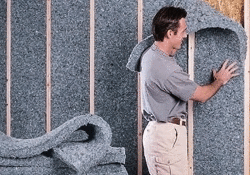BEDROOM BEDSHEETS SELECTION

Since the bed sheets (and pillowcases) are the material that touches your skin, it's important to get the best you can afford. The price is governed by three factors: the thread count, the type of fabric, and whether or not it is a designer product. The main issue with sheets is the thread count. This refers to the number of threads per inch, The more threads, the finer, softer, and more durable the sheet. The term percale designates that the product has a minimum of 180 thread count. Anything less is muslin, not very durable and quick to pill. A thread count of 200 to 210 is very satisfactory, and anything over 250 feels downright luxurious. Poly-cotton blends are popular as they require no ironing and remain wrinkle-free on the bed. You will find plenty of variety in quality and design with these "wash and wear" sheets, but polyester does not breathe and consequently these sheets are not comfortable for warm sleepers. Also, they do not last as long as natural fibers. One hundred percent cotton is a natural product, as is linen. The price range can take quite a jump, but so does the quality. Egyptian cotton has longer fibers that make a softer, more durable sheet. An Egyptian cotton sheet with 200 thread count will feel like a regular cotton sheet with 300 thread count. Linen is spun from flax and is the most expensive sheet. It is more resilient than cotton, grows softer with each washing, and will last for years. It does, however, require ironing. As with clothing, a designer label will bump up the price of bedding, and chances are good that you can find a similar color and thread count a few aisles over at a lower cost. Watch for sales-they are semiannual events at most stores, and you'll be able to upgrade with a clear conscience. Duvets and bedspreads Visually, the style of the bed, the bedcover, and the presence or absence of a bed skirt and pillow shams define the style of the room. In master bedrooms, beds are growing-queen and king sizes are now the norm. This transfers to a large area to be covered. Therefore, the color and pattern of the bedcover will dominate. Duvets are the most popular choice. The lightest, loftiest duvets are filled with a higher ratio of down to feathers. The duvet cover should have a high thread count to allow the down to breathe. Your body heat works along with the down to regulate a comfortable sleeping temperature. Any synthetics between you and the down, such as poly blend sheets or pajamas, will hinder the heat transfer. Comforters made with cluster-fill polyester and cotton are suitable for those who like a lot of warmth when sleeping, and are less costly than down.